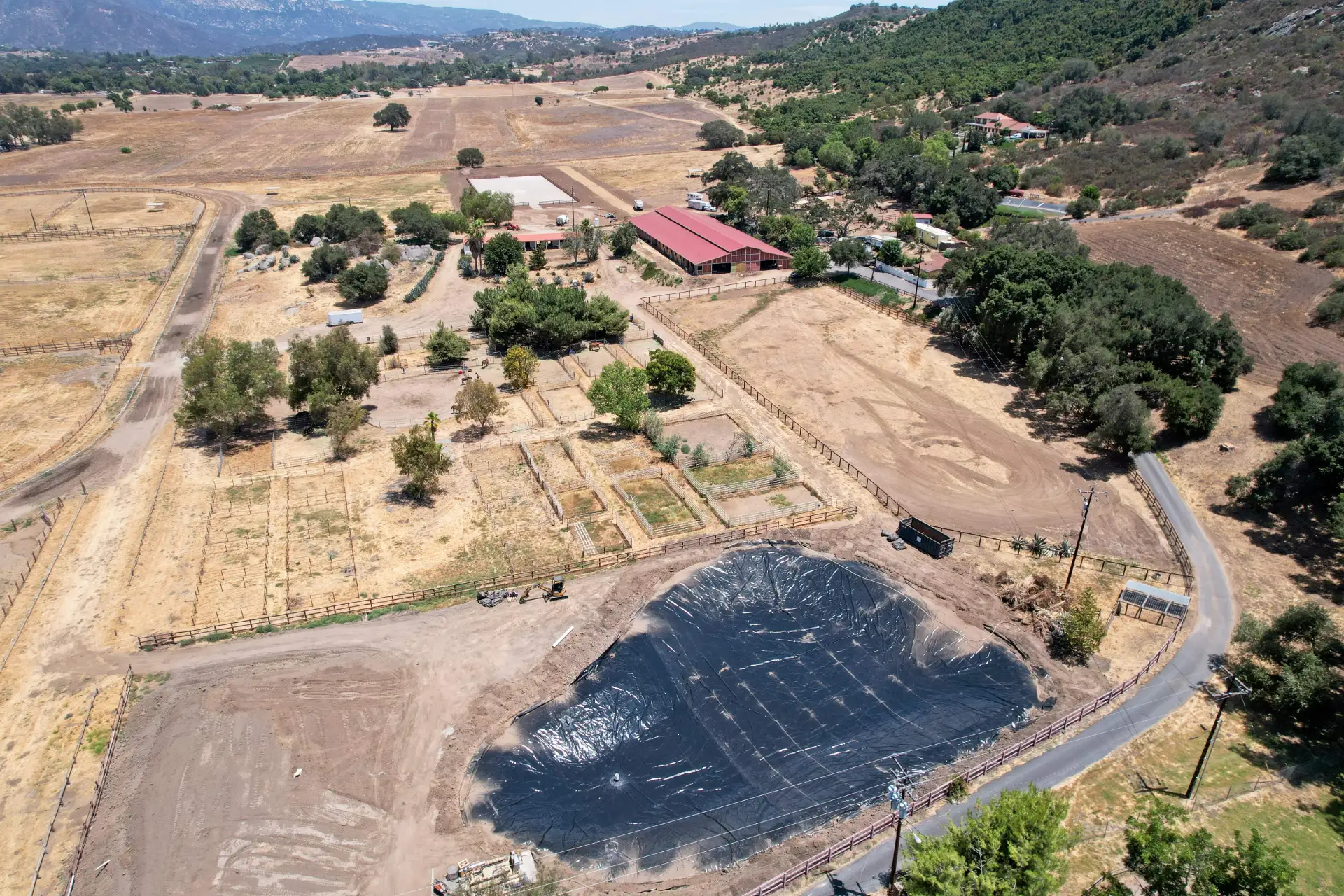The term “nursery pond” is commonly used with two different meanings, referring to two very different usages – one in agriculture, the other in aquaculture.
- An irrigation nursery pond is a store of water for irrigating, typically, a plant or flower nursery, or a container nursery (which cultivates plants in soil-filled containers ready for retail sale).
- The other type is a fish nursery pond, used to nurture infant fish (such as fry or spawn) until they’ve grown enough to be transferred to a more general fish pond (the grow-out pond).
So the one pond is feeding water to irrigate young plants, the other is forming a habitat to nurture young fish. One is created to AID a nursery, the other is created to BE a nursery. Let’s look at them both in turn.
Nursery Ponds for Irrigation and Water Storage
A nursery irrigation pond is a water storage facility that collects and supplies water for a plant nursery’s irrigation system. These ponds store large volumes of water, often sourced from rainfall, to provide a consistent water supply for watering plants in a cost-effective and sustainable way, especially in areas with drought stress.
As with all irrigation ponds, the nursery pond forms a buffer between the availability of water (either in too short supply from drought or too abundant from storm) and the steady need of plant life for regular watering. A nursery can be an enclosed array of greenhouses or an outdoor, forested area. The principles of irrigation remain the same.
The water from the pond is pumped through an irrigation system such as overhead sprinklers or ground based drip lines, to deliver it to the plants. Depending on the system used, the nature of the pond and the source of the water, significant filtering may be required to run the water through its delivery system.
The quality of the water is important, both for the health of the plant and from more general environmental concerns. Sometimes the water source is from stormwater or floodwater, and large-scale debris must be filtered out of the onward flow system. And contaminants from agricultural products such as fertilizers and pesticides are sometimes a factor to watch for.
Another advantage relates to sustainability. Water stored in a pond warms slightly through solar exposure, which can be helpful when irrigating sensitive seedlings. Sudden application of cold water can shock plants and slow growth. Additionally, sediments in pond water can carry micronutrients to the soil, sometimes reducing the need for certain fertilizers.
Managing a nursery pond requires attention to water levels, inflow sources, evaporation, and seepage. In areas with porous soils, the pond bottom may need to be lined with clay or geomembrane liners to prevent excessive water loss. Surrounding vegetation should be monitored to prevent tree roots from penetrating embankments, which can cause leaks. Algae growth, while sometimes harmless, can also indicate nutrient imbalance or stagnation. Farmers often introduce natural aeration or circulation to keep the water clear and healthy.
Some nursery ponds also serve as wildlife watering points, especially in rural areas. Birds, amphibians, and insects may take advantage of the water source. While this can increase ecological richness, it may also invite challenges such as bank erosion from animal traffic or risk of contamination from droppings. Regular monitoring and maintenance can keep the pond functioning without significant harm to its surroundings.
In many operations, a nursery pond, as with any irrigation pond, may be part of a larger water management strategy, and may require additional filtration or treatments, specifically to ensure the water is suitable for the specific plants being grown.
See our many articles on the best practices and considerations of irrigation ponds.
Nursery Ponds in Fish Farming
In aquaculture, the term nursery pond refers to a pond used to raise infant fish, usually during the early life stages between hatching and juvenile maturity (when they are often called fingerlings). They act as a temporary, controlled environment between a hatchery and the final grow-out pond.
This phase is critical because young fish are delicate, easily stressed, and sensitive to fluctuations in water quality. A nursery pond is therefore designed to be shallow, warm, and fertile – conditions that promote the rapid growth of natural plankton, which is the primary food source for fry.
Unlike irrigation ponds, which primarily store water, nursery ponds in aquaculture are managed as living ecosystems. Fertilizers may be applied to stimulate plankton bloom. Aeration systems are sometimes installed to prevent oxygen depletion, which can lead to mass mortality among young fish.
Nursery ponds can be natural or man-made, sometimes lined to maintain water quality and prevent leaks. They are often located near the grow-out pond and designed to allow for easy drainage into the larger pond.
Fish in nursery ponds are observed closely, sometimes several times per day, to ensure growth rates are on track and that no signs of stress or predation appear. Transferring from nursery ponds is usually done when fish reach a specific size, often measured in grams rather than inches. The transfer must be handled gently to avoid injury or shock. Once moved, the nursery pond may be drained, cleared, and prepared for the next cycle.
For more on fish farming and fish ponds, see our many articles on the subject.


